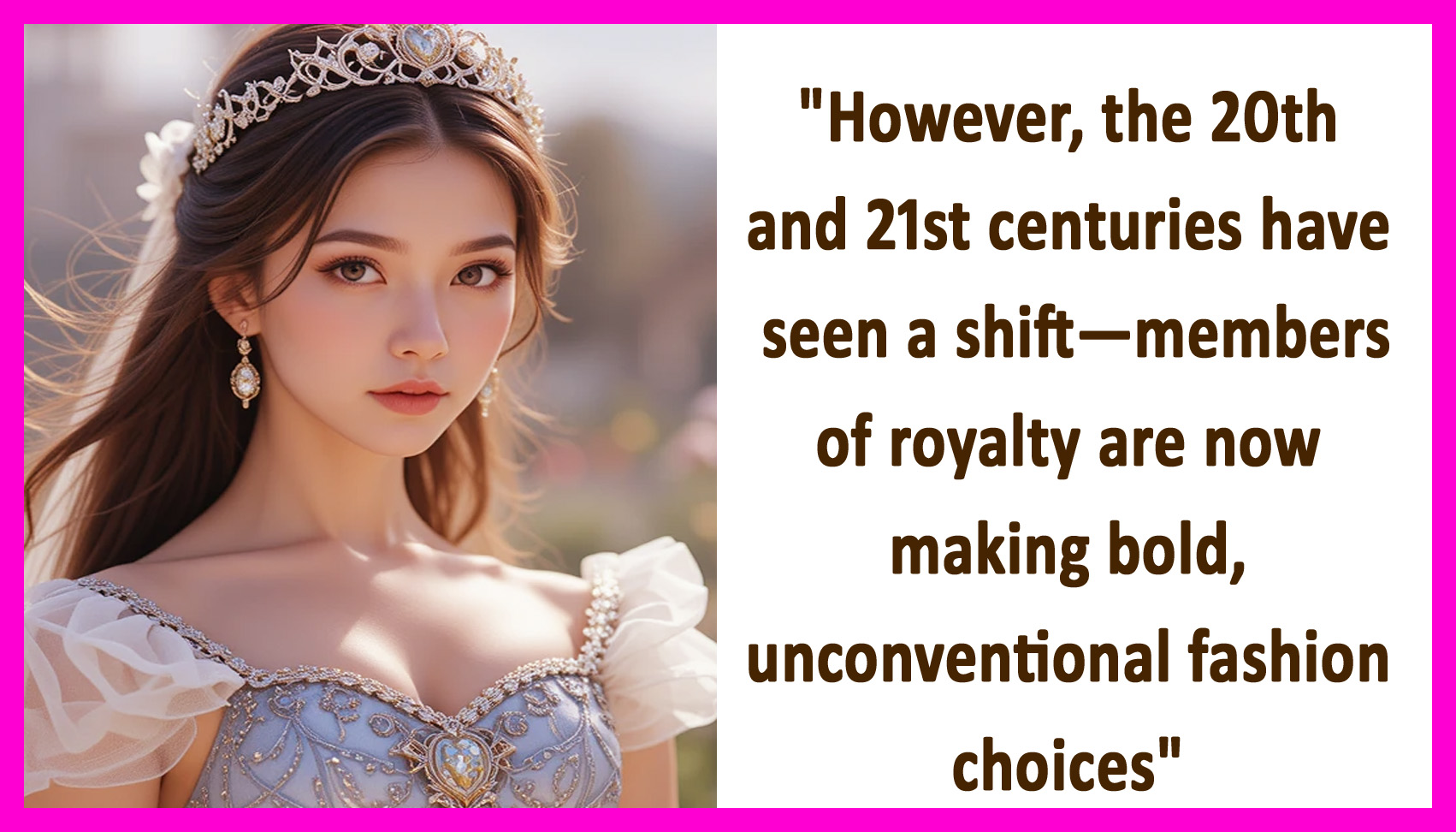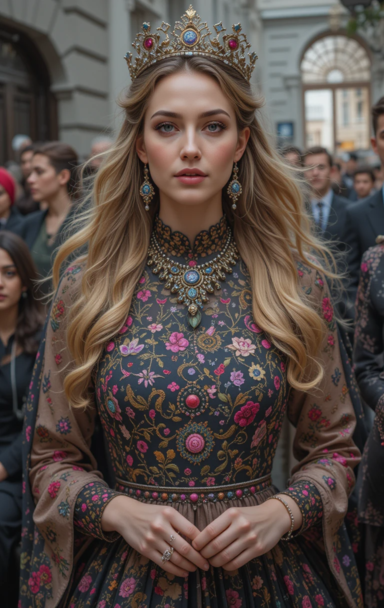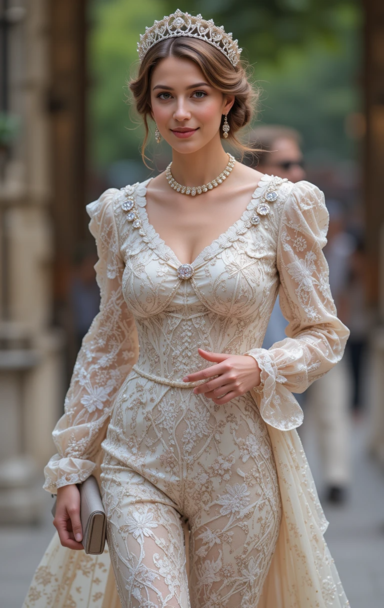Breaking the Crown’s Dress Code: Rebellious Fashion Choices in Modern Royalty
Introduction
Royal families have long been the epitome of tradition, elegance, and strict adherence to protocol. One of the most visible and scrutinized aspects of royal life is fashion. From the opulent gowns of medieval queens to the modern yet conservative outfits of contemporary royals, the monarchy’s dress code is steeped in history. However, the 20th and 21st centuries have seen a shift—members of royalty are now making bold, unconventional fashion choices that challenge the norms of their institutions. This article explores how modern royals have broken traditional dress codes and redefined the meaning of royal fashion.
The Historical Context of Royal Dress Codes
Royalty has always been associated with grandeur and decorum, and dress codes were established to maintain a distinguished image. The British royal family, for instance, follows a set of unwritten rules regarding attire, ensuring modesty, tradition, and appropriateness for every occasion. Similarly, European and Asian monarchies have strict guidelines governing attire, from state banquets to public engagements.
Historically, these codes served to separate royalty from the general public. Gowns were embroidered with rare jewels, suits were tailored to perfection, and accessories like crowns and tiaras symbolized status and power. Deviations from this strict code were rare and often frowned upon. However, as the world has evolved, so too has royal fashion.
Princess Diana: The Ultimate Fashion Rebel
Princess Diana is often regarded as the first modern royal to break the traditional mold. While she initially adhered to royal fashion protocols, she later used her wardrobe as a tool for self-expression. Her decision to wear bold colors, daring silhouettes, and high-fashion designer pieces was revolutionary.
One of her most famous rebellious fashion moments was the infamous “revenge dress” she wore in 1994 after Prince Charles admitted to his affair with Camilla Parker Bowles. The black, off-the-shoulder dress by Christina Stambolian was a stark departure from royal modesty and became an iconic moment in fashion history.
Diana also famously wore suits, casual jeans, and sweatshirts, challenging the notion that princesses had to be perpetually adorned in formal wear. Her ability to blend sophistication with modernity paved the way for future royal fashion evolution.
Meghan Markle: The Duchess Who Redefined Royal Style
Meghan Markle’s entry into the British royal family in 2018 brought a fresh perspective to royal fashion. As an American actress, she was accustomed to dressing in a way that reflected her personal style rather than conforming to strict royal traditions.
Meghan made several notable fashion statements, including wearing a sleek Givenchy wedding gown with a simple boat neckline, defying the traditional lace-heavy, elaborate wedding dresses often worn by royal brides. Additionally, she often opted for pantsuits, which were rarely seen on British royal women in formal settings.
Her refusal to wear pantyhose on several occasions, a staple of royal women’s attire, further solidified her image as a modern, independent royal. After stepping down as a senior royal, Meghan’s wardrobe choices became even more daring, embracing contemporary, minimalist fashion with bold silhouettes and modern accessories.
Queen Letizia of Spain: A Modern Monarch’s Approach to Fashion
Queen Letizia of Spain is another royal who has pushed the boundaries of traditional fashion. Unlike her predecessors, who adhered to classic, conservative royal attire, Letizia has embraced a more contemporary and experimental style.
One of her most daring fashion moments was wearing leather pants to an official event—something unheard of for a queen. She frequently chooses high-street brands over luxury designer pieces, making her wardrobe more relatable and accessible. Letizia’s approach to fashion is both modern and diplomatic, as she often supports Spanish designers, balancing national pride with personal style.
Crown Princess Victoria of Sweden: A Balance Between Tradition and Modernity
Crown Princess Victoria of Sweden has also subtly challenged traditional royal dress codes. While she typically adheres to conventional royal fashion, she has been seen wearing modern, sustainable clothing that aligns with her advocacy for environmental causes.
One notable example is her repeated outfit recycling. Instead of constantly wearing new outfits for public appearances, she re-wears dresses and suits, promoting sustainability in fashion—a stark contrast to the traditional expectation that royals must always wear something new. Her embrace of sustainable fashion has inspired many and positioned her as a forward-thinking royal.
Princess Charlene of Monaco: The Edgy Royal
Princess Charlene of Monaco has frequently defied traditional royal fashion norms with her bold and edgy choices. Unlike other European royals who favor feminine and classic styles, Charlene opts for structured suits, androgynous fashion, and daring cuts.
She has been seen in tuxedos, capes, and sleek, minimalistic gowns that break away from the opulence expected of royal attire. Charlene also experiments with short hairstyles, which is unconventional in the world of royalty, where long, elegant locks are often favored. Her style choices reinforce her individuality and modern approach to being a royal.
Kate Middleton: A Subtle Evolution of Royal Fashion
The Princess of Wales, Kate Middleton, has remained largely traditional in her fashion choices, yet she has introduced subtle changes that reflect modern sensibilities. She frequently wears high-street fashion brands, making royal fashion more accessible to the public.
Kate has also popularized the concept of “dressing down” while maintaining elegance. She pairs designer coats with affordable accessories and often re-wears outfits—an approach that was uncommon in the past. Though not as rebellious as Diana or Meghan, her modern tweaks to royal fashion still challenge old-fashioned notions of royal dressing.
The Impact of Social Media on Royal Fashion
In the age of social media, royal fashion choices are more scrutinized than ever before. Every outfit worn by a royal figure is analyzed, discussed, and often turned into a trend. This heightened visibility has pressured royals to balance tradition with modernity.
Fashion-conscious royals are now aware that their clothing choices have the power to influence industries, promote causes, and challenge societal norms. The impact of social media has given them more freedom to express their individuality while still respecting the traditions of their institutions.
The Future of Royal Fashion
As the world continues to evolve, so will royal fashion. The younger generation of royals, including Princess Leonor of Spain and Princess Ingrid Alexandra of Norway, may further push the boundaries of traditional dress codes. With a growing emphasis on sustainability, inclusivity, and personal expression, future royals are likely to redefine what it means to dress like a monarch.
The balance between upholding tradition and embracing modernity is a delicate one. While there will always be a level of expectation for royal attire to remain polished and elegant, the trend of challenging rigid dress codes is unlikely to fade.
Conclusion
Fashion has always been a powerful tool for self-expression, and modern royals are using it to break free from outdated conventions. From Princess Diana’s daring choices to Meghan Markle’s contemporary approach, the evolution of royal fashion is a testament to changing times. As the next generation of royals takes the stage, the future promises an even greater shift toward individualism, modernity, and personal style in royal wardrobes.
















